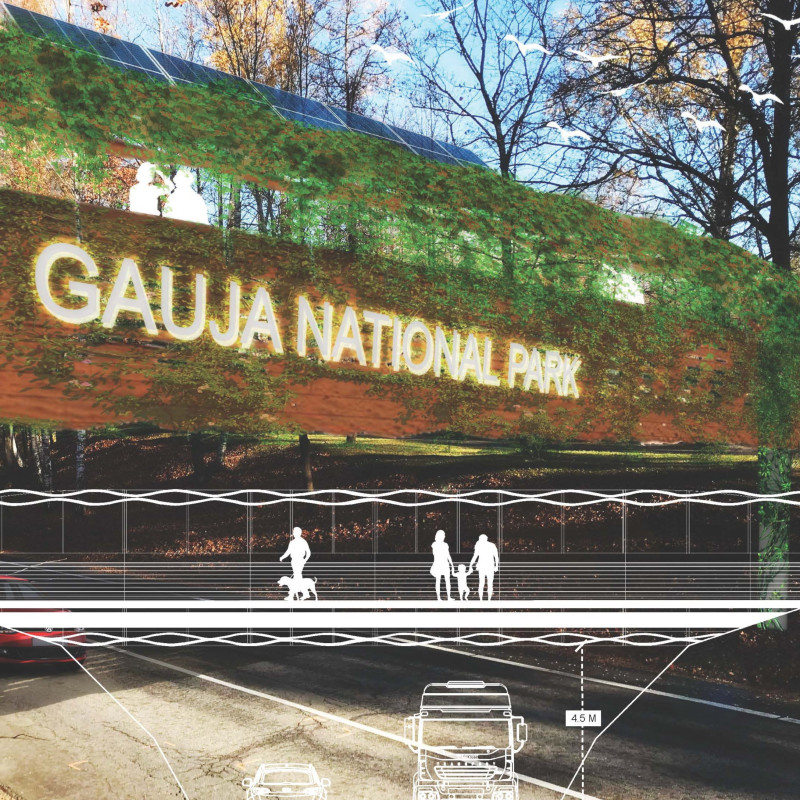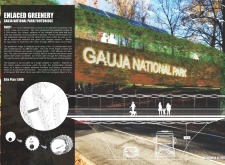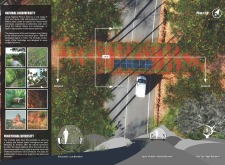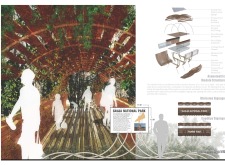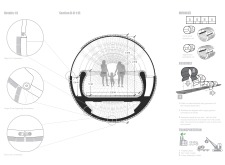5 key facts about this project
Integration of Nature and Structure
A distinctive feature of the Enlaced Greenery footbridge is its thoughtful material selection and construction method. The use of prefabricated modules, primarily constructed from recycled steel, ensures structural integrity while minimizing environmental impact. These modules are enveloped in thermo wood cladding, providing aesthetic warmth and allowing natural light penetration and airflow. Unlike conventional bridges, this design actively facilitates the growth of local vegetation through integrated planting rails, which promote a biodiverse environment.
The footbridge structure incorporates modular pods designed for resting and observation, aligning with the idea of creating spaces that mimic natural habitats. This engagement with the landscape allows visitors to experience the varying elevations and ecosystems of the park, bridging the gap between built form and natural surroundings. The design reflects an ecological intelligence, enhancing the visitor experience without compromising the integrity of the natural environment.
Sustainable Design and Functionality
The architectural design also emphasizes renewable energy through the integration of solar panels into the roof structure, highlighting a commitment to sustainable practice. This approach reinforces the footbridge's role as not merely a passage but a multifunctional entity that supports environmental stewardship. The sustainability aspect is further enhanced by the provision for adaptable space within the prefabricated modules, ensuring the bridge's versatility in response to changing visitor needs and seasonal requirements.
The unique combination of structural and ecological design elements differentiates the Enlaced Greenery footbridge from typical pedestrian bridges. It prioritizes an immersive experience within the natural setting, fostering an awareness of biodiversity and promoting sustainable engagement with the landscape.
To explore the architectural plans, architectural sections, and architectural designs involved in this project, review detailed presentations to gain deeper insights into the innovative ideas that define the Enlaced Greenery footbridge.


